Computer
Why Is SEO Important for Your Small Business?
Published
7 months agoon
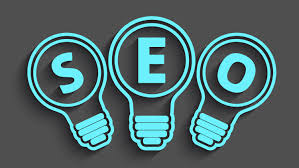
A strong online presence helps businesses build a successful brand and attract customers. With many brands working on boosting their online presence, and devising innovative marketing strategies, the competition is getting tougher each day.
Putting this in mind, businesses need to make their digital presence become more valuable, visible, and accessible to customers. How do you do that? Simple. Through search engine optimization or SEO.
In this article, we’ll tell you what SEO can do for your small business and why you need to do it. First, let’s understand what SEO is.
What is SEO?
SEO is a process of improving your website to increase its visibility across search engines. The objective is to improve the quantity and quality of website traffic through strategic changes. Besides keyword research, tracking and analysis, it also involves updates on core web vitals such as mobile-friendliness, site speed, the content of web pages, and interactivity.
Successful optimization is about serving customers’ needs while adhering to the best practices and guidelines of search engines like Google. Anticipating customer intent, understanding the content they want, and providing relevant answers are the heart of good SEO.
The key here is combining both the strategic and technical elements together. This serves the need of customers in a way that is also attractive to search engines.
4 Benefits of SEO
SEO offers many benefits but we’re highlighting the most important benefits here:
1. Targets quality traffic
SEO is an inbound marketing strategy. Unlike traditional ‘outbound’ advertising channels, the inbound methods focus on letting your audience find you when exploring options for a specific service/product type. This is not only convenient but also brings in qualified leads for your business. With SEO, the people who visit your website are likely to consider contracting a service or making a purchase.
2. Affordable
The best thing about SEO is it’s very affordable compared to other marketing strategies like PPC (pay-per-click) or paid advertising. Even without knowledge of SEO, you can outsource affordable managed SEO services. In fact, BigRock offers expert search engine optimization services to help you get your website rank across top search engines.
Moreover, investing in SEO services offers a long-term benefit for your business. Though trends keep changing, the core strategies and processes associated with SEO should stand for the years and would require minor tweaks. If done right, it is one of the best long-standing marketing solutions for your business. SEO provides a good and continuous return on investment through the years.
3. Progress monitoring
SEO is completely measurable and can be easily tied into any of the paid marketing strategies. Although it won’t be as straightforward as the paid ads, and you will need to understand how your organic traffic is leading the sales. With tools like Google Analytics, you can easily track conversions based on page views, order completions, click-to-call, and more. When it comes to optimizing your SEO efforts, you can use tools like Google Search Console to help understand how people find you, what you are ranking for, and where there is room for improvement.
You can take BigRock’s team of SEO experts with years of experience in search engine optimization and achieve great results.
4. Builds trustworthy web experience for customers
Getting the number one spot on the Search Engine Results Page (SERP) largely relies on the authority you build. You may have the best resource or answer, but without a good user experience, you’ll have a very hard time getting people on your website.
That is why technical elements of SEO like backlinks, page speed, and other authority-building elements are crucial for your online success. Adhering to the rules governed by search engines maintains a high-quality website. It also helps you rank better and get better exposure. Additionally, SEO makes it easier for customers to trust you based on the functionality of your website. Having fast-loading pages, customer service portals, and setting security measures are just a few ways of doing this.
Wrapping Up
Considering the amount of information available about trends, best practices, and implementation, taking the first step to develop an SEO strategy can be difficult. Therefore, outsourcing SEO services from reputable agencies is recommended for small businesses. BigRock’s managed SEO services benefits include targeted campaigns, monthly performance reports, website analytics, and more.
You also get a dedicated SEO expert that shares all the campaign updates, performance statistics, and other metrics. Get the help of our experts today.
Related Article:
You may like
Business
ChatGPT: Here’s All You Need to Know About the AI Chatbot
Published
7 months agoon
September 30, 2024
The internet is abuzz with the hype around ChatGPT, one of the most recent advancements in technology. With the ChatGPT AI innovation gaining approximately one million users in just a few months from its launch in November 2022, it seems that its market is geared up to expand at an even faster rate.
What is ChatGPT?
ChatGPT (Generated Pre-trained Transformer) is an AI-based chatbot system that uses NLP (Natural Language Processing) to generate conversations. It was developed by San Francisco-based artificial intelligence company OpenAI.
ChatGPT, a Large Language Model (LLM), has a remarkable ability to interact in a conversational dialogue form. It is trained to follow instructions in a prompt and provide a detailed response. The system’s dialogue format makes it possible to answer follow-up questions (if any), challenge incorrect premises, admit mistakes, and reject inappropriate requests.
ChatGPT is trained using Reinforcement Learning from Human Feedback (RLHF), using the same method as InstructGPT, a sibling model of ChatGPT, but with minute differences in the data collection setup.
An initial model was trained using supervised fine-tuning: human artificial intelligence trainers provided conversations wherein they played both sides – as an AI assistant and as the user. The trainers were given access to model-written suggestions to help them in composing their responses. Then, this new dialogue dataset was mixed with the InstructGPT dataset, which was then transformed into a dialogue format.
What can you do with ChatGPT?
Aside from responding to human queries, ChatGPT can also be used to do the following:
1. Create Content
ChatGPT can be used for brainstorming content ideas on specific topics or keywords and creating content. It can quickly write content based on a prompt. This includes topic outlines, blog articles, social media captions, and anything content related.
2. Generate AI Art
Since the introduction of artistic AI tools like DALLE-2 and Midjourney, AI art generators are being leveraged for creating creative images. An AI Art Generator is a system capable of creating videos, images, or music based on a given text prompt. The system is then trained using various image-text pairs.
Moving ahead, ChatGPT has great potential to produce detailed AR (Augmented Reality) scenarios when prompted.
3. Write code and debug
ChatGPT can process and write codes and help the developers debug codes. For example, it can be used for generating SQL queries. As it is important for data scientists to be well-versed in SQL, they can use ChatGPT to enhance their SQL skills.
4. Manage and manipulate data
Usually, it is challenging to sort, manage, and organize unstructured data, making it redundant. ChatGPT can be helpful here. It can convert unstructured data into a structured format by manipulating the data.
For example, ChatGPT can add data to a table, make indexes, and understand JSON queries.
5. Explain and tutor
You would be surprised to see how well ChatGPT can explain code, words, and any other topics. As ChatGPT’s AI tutor capabilities develop and become refined, it could dramatically alter the way students would use the tool for academic purposes.
5 ways SEO professionals can use ChatGPT
We’ve outlined a few of the many ways SEO professionals can leverage their work using ChatGPT:
1. Keyword research and analysis
Practically, ChatGPT makes keyword research effortless. All you need to do is open the chatbot, type a few of your target keywords and ask for the related ones. ChatGPT will prepare a list of related keywords based on its understanding of the search results.
SEO professionals can also use it to determine the competition for various keywords.
2. Content strategy development
You can ask the ChatGPT tool to outline a content marketing strategy. While it does not give granular plans (though you can probably ask for the same), it does provide a high-level set of tactics for the content related to a specific field.
A concerning factor while employing a chatbot-created content strategy is that your close competitors may be doing the same thing. For example, companies in the AI domain may be creating nearly identical blogs about common topics like “the advantages of AI”, “how can AI SAAS companies improve efficiency”, etc. – which means that the risk of duplication is not impossible.
3. A better understanding of search intent
This is one of the most interesting SEO-related potentials of ChatGPT – its ability to understand the search query properly and look beyond the words to the intent of a specific search.
Google also tries to do this and has dramatically improved over the lifespan of the search engine, but to quote a tweet by Kieran Flanagan, “Google takes your query and attempts to answer it. ChatGPT takes your query and will often improve upon it.”
Moreover, ChatGPT’s learning ability will allow it to develop a greater understanding of every search’s intent, sometimes even providing the information the searcher wasn’t even aware that they were looking for.
And as most SEO professionals are aware, shaping content to answer a question in a better way will shoot up the rankings. ChatGPT can help you do that.
4. Composing and managing analytics reports
Providing data and preparing reports and spreadsheets are important for marketers and companies to prove that their efforts are making a difference. However, sometimes such tasks can get overwhelming. ChatGPT can be a real game-changer in cases like this. Moreover, its functionality can help you identify new ranking opportunities that might get missed out.
Let’s suppose you want to compose regular expressions (regex) for analytics reports such as Google Search Console or Google Analytics, but you do not have a strong programming and technical background. This can be difficult when done manually. This is where ChatGPT enters: it can do the job for you.
For example, you want to filter a report using specific words to identify opportunities to broaden your ‘how-tos’ or ‘what is’. All you need to do is go to ChatGPT and enter the correct prompt:
“Compose regular expression which starts with “How To” or “What is” case insensitive using RE2 syntax” and it will get the job done instantly.
ChatGPT allows anyone to use the chatbot to generate a list automatically.
5. Composing complex spreadsheet formulas
People often struggle with Excel and Google Sheets as they find it difficult to compose spreadsheet formulas. You need time to find the exact function name you need and then spend time figuring out how to make it work.
ChatGPT can save you from the headache of parsing data and writing formulas. You can simply enter a command like:
“Google Sheet formula which copies all rows from sheet1 where column “A” contains the word “iPhone” and voila, it will give you the solution.
READ: SEO 101: A Beginners’ Guide to Understanding SEO
Will Language Models replace Google Search?
In 2017, Google itself created an AI chatbot called LaMDA. The performance of this chatbot was so close to a human conversation that a Google engineer claimed that LaMDA was sentient.
Given how these LLMs can answer most questions, is it far-fetched that the technical giants will replace traditional search with an AI chatbot in the future?
Well, technology still has a long way to go.
Currently, the users are required to confirm the information from authentic sources before they trust the ChatGPT replies. And, verifying ChatGPT answer’s accuracy takes effort because unlike Google, it uses text without any citations or links.
Moreover, the current implementation of ChatGPT seems to be a tool that will need the purchase of credits to before it can be used.
Nonetheless, it is fair to envision a hybrid (search and chatbot) future for search. As ChatGPT is making progress, Google is also building LLMs of its own and using artificial intelligence extensively in search algorithms.
Is ChatGPT free to use?
Currently, during its “research preview” phase, ChatGPT is free to use. The chatbot is open for all users to try out and provide feedback on the accuracy of the responses.
The road ahead
While generative AI proves to be a game-changer in numerous tasks and areas, there is a strong need to govern these new innovations as well as their impact on society and the economy.
The discussions between controlled and centralized adoption with firm ethical boundaries on one hand vs. faster innovation and decentralised distribution, on the other hand, will be essential for the generative AI community in the coming years.
This task is not only reserved for private companies. It is equally important for the policymakers and the civil societies to weigh in on, including disruption of labour markets, licensing, legitimacy of scraped data, copyright, and the potential for either biased or otherwise harmful content, misinformation, and so on.
Only when solid checks and balances are in place, more thoughtful and beneficial expansion of generative AI products and technologies can be achieved.
Computer
Managed Dedicated Server: Pros & Cons Your Business Shouldn’t Miss
Published
7 months agoon
September 30, 2024
If you’re looking for the best hosting option for your business, a dedicated server can be a great solution. But it will require effort on your end, from setting up the infrastructure to regularly updating and maintaining your server.
The good news is that many dedicated server hosting providers offer managed server solutions where they handle all aspects of server management and maintenance.
In this article, we’ll walk you through managed dedicated server hosting, its advantages and disadvantages, and why your business needs it.
What Is a Managed Dedicated Server
Managed dedicated server hosting allows you to “rent” an entire server without the hassle of managing it. Instead of dealing with the tedious task of operating system updates, storage upgrades, backups, security patches, and performance optimisation yourself, the hosting provider will handle it for you.
Managed servers are most suitable for businesses that don’t have their own internal staff or those that want to free up their IT staff so they can focus on other tasks.
Who Benefits from Managed Dedicated Server Hosting
If you’re a company with over 500 employees, manages large amounts of data, or receives hundreds of ecommerce transactions daily, a managed dedicated server is a good choice for you. It’s also perfect for tech-related businesses that need the flexibility of a customised server to suit their resource-intensive online applications.
RELATED: 6 Reasons Why Dedicated Server Hosting is Best for High Traffic Websites
Managed Servers: Advantages and Disadvantages to Consider Before Making the Switch
Advantages
- Cost-saving
Since the hosting provider handles the technicalities, you’re able to cut costs on server setup and regular in-house maintenance. This allows you to allot your budget and resources to other areas of your business.
- Technical expertise
You don’t have to worry about doing regular data backups and timely upgrades because the hosting provider will handle those tasks for you. This way, you can rest easy knowing your server is performing at its fullest potential, which, in turn, improves your websites’ user experience.
- Time-saving
The time you need to spend on managing servers could be better used on the more important areas of your business. With a managed dedicated server, the provider handles the installation, integration, and maintenance work, freeing you up more time to run and grow your business.
- Scalability
The more your business grows, the more resources you’ll need. If you don’t upgrade to meet those demands, your website’s performance may suffer, and you risk experiencing costly downtime.
On a managed dedicated server, you get the option to upgrade your server resources without worrying about migrating to a different server yourself. You can ensure that the hosting provider has the necessary resources and technical expertise to handle your business’s growth.
Disadvantages
- Costly for startups or small businesses
Dedicated servers are naturally more expensive than shared web hosting. While this may not be a problem for many mid to large enterprises, it’s often too expensive for startups or small businesses.
- Migration
Since you don’t own the server, you can’t take it with you when you switch providers. You need to migrate all your data as the provider will lease the server to someone else.
- Outsourced response
When a technical issue arises, time is of the essence. Working with a hosting provider means reaching out to a remote support team to resolve the problem rather than an in-house expert that can fix the issue right away.
- Censorship
Some providers won’t let you host everything on their servers. There are certain types of content that they may prohibit, like adult content, political content, online gambling, malicious scripts, and more. This is their way of protecting their company’s integrity and principles.
In a nutshell, the pros and cons of Managed Dedicated Server can be summarized as follows:
PROS CONS Save on expensive hardware upgrades, IT staff, recovery plan for any disaster, etc. Costly for startups or small businesses Get technical support from your managed service provider in case of any issues You must migrate the data when you want to transfer to another server Management and maintenance are taken care of so you can focus on your business Getting assistance from a remote team may take some time Your space is scalable as your business grows Some hosting companies may censor website content they deem malicious
Focus on Running Your Business, Not Your Server
When you leave your server responsibilities to your hosting provider, you’ll have enough time and energy to focus on other aspects that will help your business grow. You can relax knowing a team of experts are on top of your IT infrastructure, ensuring it provides optimal performance 24/7.
Leave your server management tasks to the experts with Fully Managed Dedicated Server Hosting today. Contact us to learn more.
Computer
Google Broad Core Update and What It Means for Website Owners
Published
7 months agoon
September 30, 2024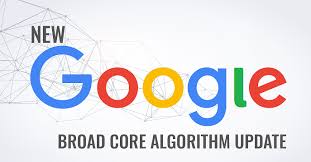
Google Broad Core Update and What It Means for Website Owners
Google is well-known for constantly updating its algorithms, causing rank fluctuations in top search engine results. While most of these updates aren’t even noticeable, they do help the search engine giant to improve its user experience.
But when the update is more noticeable, Google ensures to confirm such updates along with concrete and actionable information that website owners, content producers, or other stakeholders need to know.
A recent update that’s currently being rolled out is the September 2022 broad core update. Read on to learn what it’s about, along with some of the previous significant updates and their impact on your SEO.
What You Should Know About the September 2022 Update
Google recently revealed a Core Algorithm Update for the entire search community on 12 September 2022. This is Google’s second broad core algorithm update in 2022 after the first one was released in May 2022. It will take around two weeks for the update to come into effect.
The September 2022 update comes under the broad core update category. This means that it is a global update and is not specific to any language, region, or website.
The main objective behind this update is to make Google better at assessing content and determining which search engine pages serve the best results to users’ queries.
These algorithm updates may result in highlighting or boosting web pages that previously went unnoticed, which means some websites may see drops in searches while others will experience gains in their web traffic.
READ: SEO 101: A Beginners’ Guide to Understanding SEO
Previous Google Core Updates and How They Affect Your SEO
Aside from the latest broad core update, it’s essential for marketers and business owners to be aware of the previous core updates that may be affecting their SEO in the back end. Read on to learn about some of these major updates.
- September 2022 – Core Update
This is the latest Google algorithm core update that has been officially confirmed by the company this month.
This core algorithm update aims to enhance the overall relevance of search results so they’re more helpful for users.
- August 2022- Helpful Content Update
The Helpful Content Update by Google was released to ensure that search engine users see more relevant, original, and helpful content in their search engine results pages (SERPs).
The update aimed to reward relevant and fresh content instead of penalising low quality, clickbait-y content.
- July 2022 – Product Reviews Update
Released in July, this was the fourth of the Product Reviews Update series for product reviews in English. The update was not anything new, only a refresh of the previous Google algorithm changes with the purpose of rewarding the best and targeted product reviews based on parameters like experience and real user testing.
- May 2022 – Core Update
This core algorithm update is meant to increase the overall relevance of SERPs and ensure they are useful for users.
- March 2022 – Product Reviews Update
This Google algorithm update was an extension to the existing one, which aimed to increase the algorithm’s ability to find the best, high-quality product reviews and bring them to the top searches.
- February 2022 – Page Experience Update
The update revealed that Google’s ranking algorithm would use various Core Web Vitals metrics along with their thresholds in its desktop ranking systems.
- December 2021 – Product Reviews Update
The second Product Reviews Update catered to all product reviews in the English language.
This update introduced various best practices for product review content, including offering audio, visuals, or other links with the product.
- November 2021 – Local Search Update
This was a global algorithm update released primarily to re-balance several factors used by the search engine to generate the best local search results.
- November 3, 2021 – Spam Update
This broad spam update was an extension of the previously released Google algorithm update, also known as Link Spam Update.
The update was released to improve its systems to effectively deal with link spam, where website owners participate in certain link schemes that violate Google’s Webmaster Guidelines.
Why Content Should Be Top Priority
What website owners need to understand is that there’s nothing necessarily wrong with web pages that experience a drop in rankings after a core update.
Instead, Google recommends that site owners simply focus on offering the best content they can, which Google’s core algorithms seek to consistently reward.
To begin with the content overhaul process, reevaluate the following:
- Relevancy and quality of content
- Expertise in content creation
- Presentation and product-related questions
- Comparative questions about the content
To ensure great content, you can also review Google’s search quality rater guidelines.
Raters are people who give Google deeper insights on whether its algorithms are yielding satisfactory results.
Raters learn to assess useful content primarily because they are well trained to understand if the website content has strong Expertise, Authoritativeness, and Trustworthiness or E-A-T.
The best thing to do is to read the guidelines, as they might help you assess how your content is doing from an E-A-T perspective and what kind of improvements you can consider.
What To Do if Your Website Is Hit
For website owners, the September 2022 core update means that every time Google updates its search ranking algorithms, your website may get hit for better or for worse.
So, what should you do if your rankings drop?
If your website drops in ranking the days following a core update, the best thing to do is to reevaluate your organic search engine strategy.
Here are some of the suggestions and guiding points Google offers to marketers and publishers in this regard:
- Make sure to produce quality content or material that offers value to users. Your content needs to be fresh, relevant, and worthwhile to your target audience.
- Always create content that satisfies the expectations of users.
- Ensure accurate spelling and grammar along with high readability.
- Avoid over-optimising your content to dodge Google’s guidelines.
- Devise a white-hat link-building plan to get high-quality connections.
- Write about subjects that you are an expert at.
Overall, it’s important to keep in mind that Google aims to offer high-quality search results for their users.
If you work dedicatedly towards supporting Google’s purpose, your website is likely going to be rewarded with higher search engine visibility.
Next Steps for Your Business
You don’t have to do anything in the first few days of Google’s core algorithm update.
Make sure not to make any big or significant website updates in the coming days. The first few days of any major upgrade are the most turbulent.
So, it’s best to wait and see how and where things settle for your website. But keep a close eye on the search results during this period and look for trends in terms of who the winners and the losers are amidst this update.
This should then be followed by figuring out how to incorporate the best practices into your strategy moving ahead.
Buckle Up for Future Updates
If you’re a website owner, you need to keep track of all Google algorithm changes or core updates. They can either help or hurt you in terms of visibility, search engine rankings, conversions, ROI, and organic search traffic.
These changes may impact your overall SEO strategy, so it’s best to be on your toes to remedy any dip in rankings before the competition gets ahead.
You may collaborate with an SEO expert for better insights on how to navigate the turbulent world of SEO for maximum advantage.
Computer
What is Google Analytics 4? A Complete Guide for Marketers
Published
7 months agoon
September 30, 2024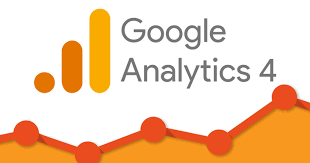
In October 2022, Google announced a significant change to Google Analytics – Google Analytics 4 (GA4), which is now the default when someone creates a new property. The previous generation of Analytics is called Universal Analytics (UA), which was the default property type for websites prior to October 2020.
One of the major reasons for this upgrade that Google cites in their announcement is the shift in consumer behavior and major changes to online privacy policies.
These shifts led Google to conclude that current analytics solutions did not provide a holistic view of the customer journey, which is mostly a cross-platform experience. To solve this problem, they launched GA4. It provides a machine learning-based approach to gaining cross-platform insights. It automatically surfaces useful insights and gives a comprehensive understanding of the customers present across different platforms and devices.
At its core, GA4 focuses on providing more data catering to the entire customer journey, including customer acquisition and degree of engagement, monetization, and retention.
Key Features of Google Analytics 4
Let’s discuss the core features and benefits of GA4 in detail.
1. Deeper integration with Google Ads
GA4 measures interactions across different apps and the web. Meaning, it can report on conversions like YouTube engaged views that occur on the web and in-app.
In particular, this integration will allow you to see web and in-app conversions for YouTube ads, Google ads, other non-Google paid channels like Facebook, and organic channels inclusive of email, social and search. This would further help simplify measuring the overall impact of all your marketing investments, irrespective of the acquisition channel.
2. Smarter insights
Google Analytics can now alert marketers about important data trends, which has been made possible by leveraging the existing machine learning models of Google.
For example, GA4 can use website data to identify the products experiencing an increase in demand due to changing customer needs. Such capabilities can help marketers be proactive and reactive as they can predict future actions that customers may take.
The new predictive metrics will also be added over time, like evaluating the potential revenue that you can earn from a specific group of customers. Then you can create custom audiences for reaching higher-value customer groups.
3. Customer-centric measurement
A more customer-centric approach is another key focus of this upgrade. It helps track the entire customer journey, which is usually a fragmented experience involving various platforms and devices.
As Google describes, GA4 uses various identity spaces, including User IDs that are provided by marketers and unique Google signals from users who chose ads personalization, to give you a complete view of how people interact with your business.
Again, this boils down to knowing exactly from where your customers are coming and what actions they would take throughout their lifecycle while interacting with a business.
4. New approach to data controls
Google Analytics 4 is designed to adapt to the new privacy landscape with granular control on collecting, retaining, and analyzing user data. Specifically, it is designed with an approach to data collection that does not use identifiers or cookies. This new platform will leverage data modeling to fill in the gaps in the customer journey, where data may be inaccessible or incomplete.
5. Reorganized reporting
Regarding reporting, Google’s goal was to make it simple to track a customer throughout a marketing funnel.
Previously, Google Analytics had only the Acquisition report. But now the new sections like engagement, monetization, and retention offer more visibility into the later stages of the customer lifecycle.
Additionally, another new reporting capability is the “Analysis” section, which provides multiple templates to analyze conversion funnels, user journey, cohort analysis, and more.
How to Migrate to Google Analytics 4
If you are setting up an entirely new property, you will be using GA4 reporting by default. Nonetheless, we will discuss how to make the transition if you are still using legacy version.
1. Create the GA4 property and launch it
Creating new GA4 property and launching them as soon as you can is of utmost importance.
Properties won’t import historical data from UA (Universal Analytics), meaning your GA4 property will begin tracking traffic data from the moment when you create it and forward.
So, the sooner you create it, the sooner you will have data populating in the GA4 property.
For launching the new property, you will need to:
- Create the GA4 property
- Add the new GA4 tracking tag to the site
Here is how you can connect a new GA4 data stream to your current UA.
- Login to your Google Analytics Account
- Click on Admin (Gear icon, bottom left navigation)
- Confirm that you have selected your desired account
- Click GA4 Setup Assistant (it will be the first option in the Property column)
- Once you reach inside the Setup Wizard, click on the large blue button to get started
- There’s just one more step, click on the blue button to Create Property.
Important note: The G4A setup assistant automatically work with gtag.js. If you use a website builder like WordPress, you’ll have to add the Analytics tag on your own. You can easily do this with Google Tag Manager.
2. List your key items
GA4 property(ies) do not extract some of the tracking items from other properties (including UA properties). A few examples of such properties are goals, content groupings or events.
The following is a list of the common tracking items people use in Google Analytics. Though you may have some additional ones:
- Events
- Goals (Conversions)
- Content Groupings
- Custom Dimensions/Metrics
- Referral Exclusions
- Product Link Connections
- Audiences
After creating the list, evaluate the things that you want to keep and the ones you want to discard. And perhaps where the gaps may exist, for which you may want to create new tracking items like new goals, new events, etc.
Remember that the goals are created in every reporting view. And the reporting views are not used with GA4.
So, if you want to save all the goals that you currently have in different reporting views (for the same UA property), you’ll have to list all the goals and create them again in the GA4 property.
3. Begin migrating individual items to GA4
Once you have a list of items that you want to recreate in GA4, the real set up work would begin.
Here are a few common items for setup and some tips to set up each one:
a. Events
Events in GA4 are somewhat similar to UA setup, but you may be required to set the tagging up anew for GA4 goals.
You may have manually set up some events in the past, such as scroll depth, which are now automatically added in GA4.
So, first you need to check the automated goals that are being tracked in your GA4 property. You can do this by looking at the events under ‘Configure’ in the navigation.
(Note: You’ll not have to recreate the events that Google has already created for you)
Google Tag Manager can be the easiest tool to use for this effort.
b. Content Groupings
In Universal Analytics, the content groupings were created only in the interface. However, in GA4, all the content groups are created using page tagging as there’s no interface setup.
Though it may require a lot of investment of time at the onset, this is a nice change.
A page can have various “gtags”, and an easy to implement these is through Google Tag Manager.
You can also visit this reference guide from Google to implement content groupings in GA4.
c. Custom Metrics/Dimensions
Similar to UA, setting up custom metrics and dimensions would be a two-step process – it needs to be set up in both the code and the interface.
Your existing UA custom metrics and dimensions tags may migrate fine to GA4, but you’ll still need to set up the metrics and dimensions in the GA4 property interface. For this you can refer to Google’s setup guide.
d. Goals (Conversions)
In GA4, the goals are renamed as “Conversions”, and all the goals are event-based.
While migrating your UA goals to GA4, it is highly advisable to begin with the event-based goals. Because these are very similar to the original goals set up in UA.
Once you have set up the events in GA4 and tagged them as conversions, begin with the engagement goals and destination-based goals.
- You can add previous destination-based goals to GA4 either via the interface or code
- For the previous engagement-based goals, you’ll have to create a GA4 audience. And then you need to create your engagement-based goals again while utilizing that audience.
e. Ecommerce
Just like all other things in the UA to GA4 migration, you’d have to move ecommerce tracking from UA to GA4. Even though it is same as UA, Google suggests to create a separate set of tags for GA4 ecommerce tracking.
Again, you can take help of the Google Tag Manager to implement ecommerce tagging across the website.
After launching all the tracking items in GA4 property(ies), carefully check if they are tracking properly.
4. Decide a date to migrate to GA4 as your only source of truth
As many organizations rely on Google Analytics for reporting, it is important for them to agree that eventually GA4 property will become the “only source of truth” for data and reporting.
Ideally, you should wait until you have YoY data in your GA4 property prior to changing your only source of truth to GA4 because tracking and metrics in GA4 are entirely different than they are in UA. Therefore, you can’t accurately use UA data from a year and compare it to GA4 data in another year.
5. Archive your UA data
In addition to forcing everyone to migrate to GA4, Google decided that they’ll also delete all the historical UA data beginning on January 1, 2024.
Though it has become unavoidable to archive this data, you should also plan to archive it in case you need to reference it in future.
- Determine the data that you need regularly
- Consider the intervals in which you access the data (If you want to archive your data in the way matching these data usage habits)
Quick Tip – if you aren’t a developer and you don’t know how to use the GA API, consider using Google Analytics Spreadsheet Add-On, which works with Google Sheets. It is very handy and pulls the data fast.
And you are done.
Conclusion
GA4 is a game-changing tool for marketers, providing valuable insights into website traffic and user behavior. With its powerful analytics capabilities, GA4 can help marketers make informed decisions and improve their overall marketing strategies.
Unlike previous versions of Google Analytics, GA4 offers enhanced flexibility and improved privacy measures, making it an essential upgrade for any business looking to stay ahead in today’s digital landscape.
As you become more familiar with GA4, you’ll quickly realize its true value. Its advanced features and in-depth analytics provide marketers with unparalleled insights and the ability to forecast user behavior like never before. If you want to take your marketing efforts to the next level, GA4 is the way to go.
Computer
How AI can help you start a business on a budget
Published
7 months agoon
September 30, 2024
In a world where innovation meets thrift, artificial intelligence emerges as your ultimate ally. Imagine launching your dream business without draining your bank account. In this blog, we’ll uncover the extraordinary ways AI is democratizing the startup landscape. From automated customer support to data-driven decision-making, AI opens doors that were once reserved for deep pockets.
Before we guide you through how AI can support you on your entrepreneurial journey, let’s understand a crucial thing.
The power of AI in business
Artificial Intelligence is a transformative force in the business world, offering unprecedented advantages to companies of all scales. It encompasses the use of advanced algorithms and computing power to mimic human intelligence, enabling machines to learn, reason, and make data-driven decisions. This technology has emerged as a game-changer, revolutionizing operations, customer interactions, and decision-making processes. From automating repetitive tasks to predicting consumer behaviour, AI is unlocking new possibilities. ChatGPT, an AI language model, is just one example of how AI can provide businesses with intelligent conversational agents, enhancing customer support, and streamlining operations. The potential of AI for innovation knows no bounds.
Leveraging AI to start a business
Let’s explore the strategic advantages of incorporating artificial intelligence (AI) technologies at the core of your entrepreneurial venture to boost efficiency, innovation, and competitive edge.
1.Market research and analysis
- AI-powered tools can collect vast amounts of data from various sources, including social media, market reports, and online discussions. This data can be analyzed to identify emerging trends, consumer preferences, and competitive landscapes.
- AI can provide detailed insights into customer segments, helping you tailor your products or services to specific demographics or niches.
- With AI-driven sentiment analysis, you can gauge public opinion about your industry or products in real-time, allowing for timely adjustments to your business strategy.
2.Decide a new company name and domain
- AI can analyze relevant keywords related to the business’s niche, products, or services. It generates business name suggestions that incorporate these keywords, ensuring the name aligns with the company’s core offerings.
- AI can enhance creativity by generating unique and memorable business name ideas that may not have been immediately apparent to human brainstorming. This can lead to more innovative and appealing name choices.
Once decided, you can buy a domain name and web hosting from a credible service provider to get started.
3.Chatbots and virtual assistants
- Chatbots can engage with customers on your website or through messaging platforms, answering frequently asked questions, and providing immediate assistance.
- AI-powered virtual assistants can schedule appointments, manage bookings, and handle routine administrative tasks, freeing up your time to focus on core business activities.
- Chatbots can maintain consistent and personalized interactions with customers, improving overall customer satisfaction and loyalty.
4.Content creation
- AI can generate content quickly and efficiently, helping you maintain a regular online presence. This includes writing blog posts, product descriptions, and even reports.
- Tools like GPT-3 can create content that is coherent, grammatically correct, and tailored to your brand’s tone and style.
- AI-generated content can also be used for email marketing campaigns, social media updates, and product listings, saving you both time and money.
5.Predictive analytics
- AI algorithms can analyze historical data to predict future sales patterns, allowing you to plan for seasonal fluctuations and adjust inventory levels accordingly.
- Demand forecasting can reduce overstocking or understocking issues, minimizing storage costs and potential losses.
- Predictive maintenance, powered by AI, can help extend the lifespan of machinery and equipment, reducing repair and replacement expenses.
6.Marketing and advertising
- AI can optimize your digital advertising campaigns by selecting the most effective keywords, ad placements, and ad creatives based on real-time performance data.
- Personalization through AI can improve customer engagement by tailoring marketing messages to individual preferences and behaviors.
- AI-driven analytics can track customer interactions with your website and ads, providing insights into the customer journey and conversion funnel.
7.Customer Relationship Management (CRM)
- AI-enhanced CRM systems can automate lead scoring, helping you prioritize and target leads with the highest conversion potential.
- AI can provide personalized recommendations for products or services based on customer behavior and purchase history.
- Predictive analytics within CRM systems can help you anticipate customer needs and proactively address issues or opportunities.
8.Financial management
- AI can analyze your financial data to identify cost-saving opportunities, such as optimizing vendor relationships or renegotiating contracts.
- Expense tracking through AI-powered tools can help you identify and eliminate unnecessary expenditures.
- AI-driven financial forecasting can improve your budgeting accuracy, allowing you to allocate resources more effectively.
9.E-commerce and inventory management
- AI can optimize pricing strategies by dynamically adjusting prices based on factors like demand, competition, and inventory levels.
- Personalized product recommendations based on AI algorithms can boost online sales and customer satisfaction.
10.Cybersecurity
- AI can continuously monitor network traffic and detect anomalies that may indicate potential security breaches.
- Machine learning models can adapt to evolving threats and enhance the accuracy of threat detection.
- Automated incident response powered by AI can reduce response times and minimize damage in case of a security incident.
11.HR and recruitment
- AI-driven applicant tracking systems can screen resumes and applications, shortlisting candidates that best match job requirements.
- Chatbots can conduct initial interviews, asking pre-defined questions and assessing candidate qualifications.
- AI can analyze candidate data to identify trends in successful hires, helping you refine your recruitment strategy.
Artificial Intelligence is revolutionizing entrepreneurship. With AI tools, startups can thrive on cost-effective solutions, boosting efficiency, customer service, and decision-making. Stay updated on AI advancements to supercharge your business on a budget. Leverage AI’s transformative power, turning your dreams into business success without breaking the bank.
If you have queries or suggestions, feel free to leave them in the comments section below. We’ll be happy to assist you!
If you have any queries or suggestions feel free to leave them in the comments box below!
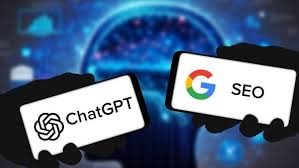
When it comes to enhancing your search engine rankings, the quality of your content plays a pivotal role. Nowadays, numerous website owners are leveraging AI tools such as ChatGPT to create content that can elevate their online presence.
However, an important question looms: Can Google distinguish AI-generated content, and if it can, what impact does it have on your SEO endeavours, whether positive or negative?
In this blog, we will cover aspects like Google’s capacity to identify AI-generated content, the potential pitfalls of depending on AI, and the unexpected SEO advantages it can offer.
The pivotal role of content in SEO
Before delving into the impact of AI on SEO, it’s essential to understand the pivotal role that content plays in your overall SEO strategy.
When it comes to enhancing your search engine rankings, nothing proves more potent than top-notch, compelling content. Search engines like Google, Bing, and others are dedicated to providing their users with the most pertinent and valuable information. To ascend the search results ladder, you need to provide content that resonates with your audience while upholding its reliability and precision. In the realm of SEO, this translates to crafting content that harmonizes with the four critical pillars of E-E-A-T: Expertise, Authoritativeness, Trustworthiness, and Experience.
For example, imagine you run a health and fitness blog. To gain a top spot on search results, you’d need content that not only provides well-researched information about various workout routines but also showcases the expertise of certified trainers, includes references from trusted medical sources, and maintains a trustworthy tone across the content.
While this may sound demanding, it doesn’t have to be. Remember that search engines constantly crawl and index web pages in search of indications that a specific content piece merits a coveted top spot. These signals include:
- Keywords (indicating relevance).
- Current and accurate information (search engines prefer fresh and up-to-date content).
- Credible evidence and sources (incorporating links or references to source materials when necessary).
- Authorship of articles and website ownership (make it easy for users to identify the content’s creators).
- Back-links (inbound links from other websites indicate trustworthiness).
- Relevance (ensure that your content directly answers users’ queries).
The higher the quality of your content, the more likely you are to earn Google’s esteemed approval. This, in turn, leads to improved rankings and a surge in organic traffic.
To create content that fulfils all these criteria, it’s essential to understand your target audience’s preferences, needs, and the keywords they use in their searches. Your goal is to produce creative and unique content that adds value to your audience.
However, it’s crucial to keep in mind that SEO is a delicate balance between providing value and optimizing for search. For instance, you wouldn’t want to overuse keywords to the point where the content appears inauthentic or overload it with references to the extent that it hampers readability.
READ: ChatGPT: Here’s All You Need to Know About the AI Chatbot
Can Google detect AI-generated content?
In the current scenario, where ChatGPT is being widely used to generate content at a faster pace, there’s an important question to consider: can Google differentiate between AI-generated content and human-written content, and if so, does this distinction affect your content’s search rankings?
Many tech and SEO bloggers believe that Google can recognize AI-generated content. For identifying such content, Google might use machine learning algorithms similar to the ones used to train AI models. For example, Google may be trained to spot things like:
- Repetitive text or text patterns.
- Excessive use of modifiers (ChatGPT tends to be fond of adjectives).
- Proper grammar and syntax but with awkward sentence structures that deviate from typical human writing.
- Consistent sentence length and style, which contrasts with the natural variation found in content produced by humans.
The good news for SEO is that Google’s knowledge of AI-generated content doesn’t necessarily affect your rankings.
Last year, Google leaned towards penalizing AI-generated content if it could identify it, as reported by Search Engine Journal. However, since then, Google’s position on AI-generated content has evolved – possibly due to the widespread adoption of ChatGPT or its own generative AI, Bard, entering the scene.
In February 2023, Search Engine Land observed that Google’s position on AI-generated content had shifted. It was reported that Google no longer emphasizes penalizing content solely based on its AI origin. Instead, the focus is on ensuring that the content serves the purpose of helping users rather than attempting to manipulate search results.
So, does this mean that you have the green light to extensively use AI for generating your web content and blogs? Well, there are still considerations to keep in mind.
The drawbacks of relying on AI-generated content in SEO
Over-reliance on AI-generated content like ChatGPT for SEO can lead to several drawbacks. While Google does not currently penalize AI-generated content, there are potential concerns. Excessive reliance on AI systems may trigger Google to identify the content as inauthentic, potentially leading to flags for poor quality or reduced relevance in search results.
Furthermore, as users encounter AI-generated content, they may perceive the website as less trustworthy. This, in turn, can have a significant impact on conversion rates and backlinks since other websites may be hesitant to link to content they deem less credible.
While Google’s current policies do not penalize AI-generated content, it is crucial to exercise caution. As noted by Search Engine Land, it is not advisable to rely solely on ChatGPT for content creation.
Benefits of AI-generated content for SEO
While there are drawbacks to incorporating AI-generated content into your website, there are some valuable advantages of creating content for the web.
To begin, AI-generated content can significantly streamline the content creation process. ChatGPT or Bard can assist in generating a list of potential article titles or provide a list of long-tail keywords.
By evaluating extensive datasets and identifying missed keyword opportunities, AI-generated content can help you enter new niches and broaden your digital presence.
For instance, we asked ChatGPT for a list of long-tail keywords suitable for this article titled “ChatGPT and SEO: A Winning Combination.” Here’s what it suggested:
- Benefits of using ChatGPT for SEO
- Improving Content with ChatGPT for SEO
- The Impact of ChatGPT on SEO Strategies
- Optimizing SEO with ChatGPT
- Use ChatGPT for SEO improvements
Furthermore, you can use AI tools to refine or expand segments of your content, giving it more life and a different tone. You can also request AI to rewrite your content for a more technical or less technical audience.
However, it’s crucial to not rely on AI for producing entire articles or documentation. Doing so could lead you into risky territory, potentially impacting SEO, accuracy, and originality.
READ: Best Practices Of Seo For Small Businesses
Is AI worth it?
When it comes to content creation, the most effective approach is to utilize generative AI tools such as ChatGPT and Bard as writing assistants. When you do so, you maintain control over your content, allowing your personal knowledge, experience, and unique personality to stand out. This way, you can have peace of mind, knowing that your website’s content remains precise and valuable.
If you have any queries or suggestions, feel free to leave a comment below. We’ll be happy to help.
Computer
What Is a Blog? Definition, Blog Types, and Benefits Explained
Published
7 months agoon
September 30, 2024
Most of the internet users must have come across a blog at some point in their lives. While they provide knowledge and entertainment, there’s so much more to them.
Blogs have emerged as powerful tools for individuals and businesses alike to share information, express opinions and connect with audiences worldwide.
But what is a blog exactly and why has it become such an important feature of the online world?
What is a Blog?
A blog is a regularly updated content website or web page that is typically run by an individual or a small group. It can either be a site in itself or a part of a website.
Blogs can cover a wide range of topics, from personal experiences and hobbies to professional advice and industry insights.
What sets a blog apart from other forms of online content is its chronological format, with the most recent post appearing first. Blogs often cover a specific topic or niche, such as travel, fashion, technology, or personal experiences. They can serve various purposes, including sharing information, expressing opinions, building a community, or promoting products and services.
READ : A Beginner’s Guide to Starting a Successful Blog
What is the Use of a Blog?
The uses of a blog are as diverse as the topics they cover. For individuals, a blog can serve as a platform to share personal stories, document travels, or showcase creative work. For businesses, blogs are valuable marketing tools for building brand awareness, engaging with customers, and driving traffic to their websites. The use of a blog can be as diverse as the topics it covers and the audience it serves. Blogs can be a powerful tool for communication, engagement, and promotion in today’s digital age, offering a platform for individuals and businesses to connect with their audience and share their message with the world.
What are the types of blogs and Top Blog Types in 2024
The blogging landscape continues to evolve in 2024 and it offers a diverse range of blog types that cater to various interests and niches. Here are some of the top blog types:
1. Personal Blogs:
Personal blogs are a platform for individuals to share their thoughts, experiences, and interests with readers. These blogs often cover a wide range of topics, including personal experiences, hobbies, and reflections on life.
2. Business/Corporate Blogs:
Business or corporate blogs are used by companies to communicate with their audience, share industry insights, and promote their products or services. These blogs are often used for branding, customer engagement, and thought leadership.
3. Fashion Blogs:
Fashion blogs focus on the latest trends, styles, and fashion tips. They often feature outfit ideas, fashion reviews, and interviews with fashion designers and influencers.
4. Blog Newsletters:
Blog newsletters are a popular way for bloggers to deliver their content directly to their subscribers’ inbox. These newsletters can include updates, highlights, and exclusive content not available on the blog.
5. Lifestyle Blogs:
Lifestyle blogs cover a wide range of topics related to daily life, including health, wellness, beauty, home decor, and relationships. These blogs aim to inspire and inform readers on how to live a fulfilling life.
6. Travel Blogs:
Travel blogs are a source of inspiration and information for travellers. They often feature travel stories, destination guides, travel tips, and advice for planning trips.
7. Food Blogs:
Food blogs focus on recipes, cooking tips, restaurant reviews, and food-related experiences. These blogs often include mouth-watering photos and detailed instructions for preparing delicious meals.
8. Affiliate/Review Blogs:
Affiliate or review blogs focus on reviewing products or services and promoting affiliate links. Bloggers earn a commission for every sale or referral generated through their affiliate links.
9. Multimedia Blogs:
Multimedia blogs incorporate a variety of media formats, including videos, photos, podcasts, and interactive content. These blogs offer a dynamic and engaging experience for readers.
10. News Blogs:
News blogs provide up-to-date information on current events, trends, and news stories. These blogs often feature breaking news, analysis, and commentary on political, social, and cultural issues.
How to Start a Blog
Now that you have read about what a blog post is, it is time to know how to start a blog. Following are some steps to help you on how to start a blog:
1. Choose a Blogging Platform:
Decide which platform you want to use for your blog. Popular options include WordPress, Blogger, and Medium. Consider your technical skills and the features you need for your blog.
2. Select a Domain Name:
Choose a domain name that reflects your blog’s topic or niche. Make sure it is easy to remember, relevant to your content, and available for registration.
3. Set Up Hosting:
If you’re using a self-hosted platform like WordPress.org, you’ll need to set up hosting. Choose a hosting provider that offers reliable service, good customer support, and the features you need for your blog.
4. Install WordPress:
If you’re using WordPress.org, you’ll need to install the WordPress software on your hosting account. Most hosting providers offer a one-click installation process for WordPress.
5. Customize Your Blog:
Choose a theme for your blog that reflects your style and the topic of your blog. Customize the design, layout, and colors to create a unique look for your blog.
6. Create Compelling Content:
Start creating content for your blog. Write blog posts that are informative, engaging, and relevant to your audience. Use images, videos, and other multimedia elements to enhance your content.
7. Promote Your Blog:
Share your blog posts on social media, participate in online communities related to your niche, and engage with your audience. This will help you attract more readers to your blog.
8. Monetize Your Blog:
If you’re interested in making money from your blog, consider monetization options such as affiliate marketing, sponsored posts, and advertising. Make sure to disclose any sponsored content or affiliate links according to the regulations.
9. Engage with Your Audience:
Respond to comments on your blog, engage with your audience on social media, and listen to feedback. Building a community around your blog can help you grow your audience and make your blog more successful.
READ : How To Start Your Blog On WordPress in 6 Quick Steps
In conclusion, a blog is a powerful tool for individuals and businesses to share their stories, ideas, and expertise with a global audience.
Whether you’re looking to express yourself creatively, build a personal brand, or grow your business, you can start easily with BigRock’s website builder and open up a world of opportunities online.
Computer
Gemini vs ChatGPT: A Comprehensive Comparison Guide
Published
7 months agoon
September 30, 2024
The world of artificial intelligence (AI) chatbots has been a competitive arena, as big tech companies strive to outdo each other with innovative ideas and improvements.
ChatGPT AI gained an early advantage in the AI chatbot space, before Google responded with Gemini AI, previously known as Bard. Although ChatGPT and Gemini serve similar purposes, there are differences between them.
We have a Gemini vs ChatGPT comparison to helps you choose what suits you.
Understanding Gemini AI
Gemini is a powerful AI platform developed by Gemini Data Inc. It is designed to provide advanced analytics and insights for businesses looking to leverage AI for their data-driven decision-making processes.
Features and Capabilities
1. Advanced Data Analysis:
Gemini AI specializes in analysing large datasets quickly and accurately. This capability is valuable for businesses as it provides real-time insights, aiding in making informed decisions.
2. Scalability:
The platform is highly scalable, meaning it can grow with a business’s data needs. This scalability ensures that businesses can expand their AI capabilities effortlessly over time.
3. Advanced Machine Learning:
When comparing Gemini vs ChatGPT, Gemini AI uses sophisticated machine learning algorithms to detect patterns and trends in data. This allows businesses to uncover valuable insights that may not be apparent through traditional analysis methods.
4. Real-time Insights:
Gemini AI provides real-time insights, ensuring that businesses have access to the most up-to-date information. This real-time data is crucial for making timely and informed decisions.
5. Decision Support:
By leveraging its advanced machine learning capabilities, Gemini AI offers decision support to businesses. This means that it helps businesses make informed decisions based on the data it analyses, leading to better outcomes.
6. Understanding ChatGPT
ChatGPT AI is an advanced language model developed by OpenAI, based on the GPT (Generative Pre-trained Transformer) architecture. It is designed to understand and generate human-like text, enabling it to engage in natural conversations, answer questions, and provide information on a wide range of topics.
Features and Capabilities
1. Natural Language Understanding:
ChatGPT can comprehend complex language patterns, context, and nuances, allowing for more meaningful interactions.
2. Text Generation:
It can generate coherent and contextually relevant responses, making it useful for applications like chatbots, content creation, and language translation.
3. Learning and Adaptation:
While ChatGPT does not learn or retain information from individual interactions, it is trained on a diverse dataset, enabling it to provide informative responses across various domains.
4. Multilingual Support:
ChatGPT can understand and respond in multiple languages, making it accessible to a global audience.
5. Customization:
Developers can fine-tune ChatGPT for specific use cases or industries, enhancing its relevance and effectiveness in different contexts.
Gemini vs ChatGPT Comparison
The Gemini vs ChatGPT competition can be better understood with the help for the following elements.
1. Pricing
ChatGPT
The pricing structure for ChatGPT is designed to cater to a wide range of users, from individuals to large enterprises.
Here is a detailed look at the different plan tiers:
- ChatGPT Free Version:
This limited version is available at no cost and provides basic access to ChatGPT’s features. It is ideal for casual users or those who want to test the capabilities of ChatGPT before committing to a paid plan.
- ChatGPT Plus:
Priced at $20 per user per month, this plan offers enhanced features compared to the free version. It is suitable for individual professionals or small teams who require more advanced capabilities for their projects or workflows.
- ChatGPT Team:
This plan is designed for teams and organizations that need collaborative features. It costs $25 per user per month when billed annually, or $30 per user per month when billed monthly. The Team plan provides additional collaboration tools and access to higher usage limits.
Gemini
The pricing for Google Gemini varies depending on the specific model and plan you choose.
- Gemini Advanced:
This version is available as part of the Google One AI Premium Plan, which costs $19.99/month. It starts with a two-month trial at no cost. This plan includes access to the Ultra 1.0 model, which is highly capable at complex tasks like coding and logical reasoning. In addition to Gemini, the plan also offers 2TB of storage and other benefits.
- Gemini Ultra:
Specific pricing details for the Gemini Ultra API have not been revealed yet. However, it is known that Google One members who subscribe to the $20 per month AI Premium plan will have access to Gemini Ultra capabilities.
2. Core Features
ChatGPT is known for its natural language understanding and generation capabilities, ChatGPT excels in maintaining a conversational tone and providing coherent responses across a wide range of topics.
Gemini is designed to perform overly complex tasks by understanding and combining diverse types of information, including text, code, audio, images, and video. It also integrates with Google Workspace apps and can be refined through fine-tuning and reinforcement learning.
3. Use and Implementation
ChatGPT is user-friendly with a straightforward API, making it accessible to beginners. It seamlessly integrates with existing platforms and applications, such as Discord, Telegram, and the web.
Gemini offers unique benefits such as prompting with text, images, and voice, and has a voice reader for accessibility. However, it may require more technical expertise for complex tasks. Gemini is integrated into Google’s ecosystem, including Google Workspace apps.
4. Output Quality and Relevance
ChatGPT AI is known for its high-quality output, with responses that are often indistinguishable from those of a human. It maintains relevance and coherence over extended conversations.
Gemini Ultra is designed to be far more capable of handling overly complex tasks like coding, logical reasoning, and collaborating on creative projects. It allows for longer, more detailed conversations and a better understanding of the context from previous prompts.
5. Use Cases
ChatGPT has a wide range of use cases due to its natural language understanding and generation capabilities. It can also be used for integrating text, images, video, and other formats (multimodal tasks), virtual assistance, language translation, and integration with various platforms and applications.
For example, it can generate blog posts, answer customer queries, translate text into different languages, and integrate with messaging apps for chatbot functionalities.
Gemini AI is designed for overly complex tasks that require processing and synthesizing diverse types of information. Some use cases for Gemini include advanced coding scenarios, serving as a personal tutor with step-by-step instructions, and helping digital creators generate fresh content and analyse contemporary trends.
It also has expanded multimodal capabilities, allowing for interactive coding features and deeper data analysis. For example, Gemini can help developers debug code, provide personalized learning experiences, and assist content creators in creating engaging content.
Conclusion
So, Gemini vs ChatGPT, which is better? The ultimate winner depends on your specific requirements. Gemini stands out for its excellence in creative multimodal content creation, making it a top choice in that regard. On the other hand, GPT-4 retains its position as the frontrunner for pure language mastery.
As the AI chatbot landscape continues to evolve, it will be interesting to see how these differences shape the future of these innovative tools.

ChatGPT: Here’s All You Need to Know About the AI Chatbot

GPT4 game changer features in 2024

ICANN Reserves ‘.internal’ Domain for Private Use—Here’s Why

ChatGPT: Here’s All You Need to Know About the AI Chatbot
Senua’s Saga: Hellblade II Review: Ninja Theory’s Flawed, but Uncompromising Sequel Is a Cinematic Achievement
How to Use Twitter’s New Bitcoin Tipping Feature
Trending
-

 Business7 months ago
Business7 months agoChatGPT: Here’s All You Need to Know About the AI Chatbot
-
Entertainment8 months ago
Senua’s Saga: Hellblade II Review: Ninja Theory’s Flawed, but Uncompromising Sequel Is a Cinematic Achievement
-
Cryptocurrency8 months ago
How to Use Twitter’s New Bitcoin Tipping Feature
-
Business8 months ago
Database Admins See Brighter Job Prospects Amid IT Challenges
-
Business8 months ago
Bitcoin Price Crosses $61,000, Most Altcoins See Profits as Market Shows Signs of Stabilisation
-
How-To8 months ago
How to Add Links to Your Instagram Stories
-
Computer8 months ago
How to Enable Chrome Dark Mode on Android, iPhone, Windows, Mac
-
Entertainment8 months ago
Lenovo Legion Go Review: Best Windows Handheld?
-
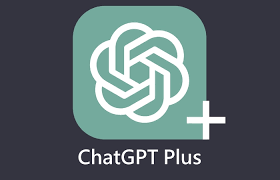
 Computer7 months ago
Computer7 months agoIs a ChatGPT Plus subscription worth it?
-

 Business7 months ago
Business7 months agoGPT4 game changer features in 2024
-
Artificial Intelligence (AI)8 months ago
How to avoid online scams and what to do if you become a victim
-
Business8 months ago
How to Check ITR Filing – IT Return Status Online
